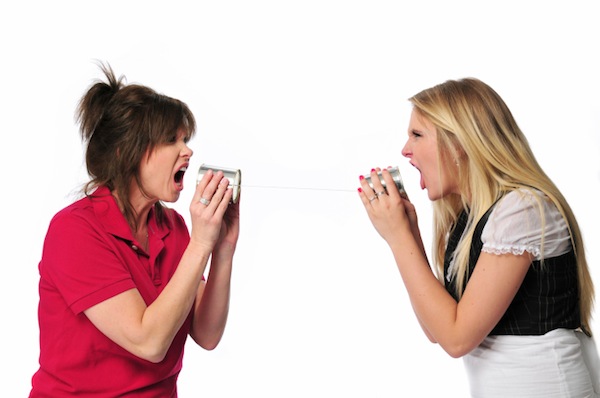
“I have come to the frightening conclusion that I am the decisive element. It is my personal approach that creates the climate. It is my daily mood that makes the weather. I possess tremendous power to make life miserable or joyous. I can be a tool of torture or an instrument of inspiration, I can humiliate or humor, hurt or heal. In all situations, it is my response that decides whether a crisis is escalated or de-escalated, and a person is humanized or de-humanized. If we treat people as they are, we make them worse. If we treat people as they ought to be, we help them become what they are capable of becoming.”
― Haim G. Ginott, Teacher and Child: A Book for Parents and Teachers
When I made the decision to become a parenting instructor, it was in part, because I knew that I always parented more effectively when I was immersing myself in the practice of positive parenting. Not only did I experience more joy when I was with my children, but they were more cooperative too. After taking parent education classes, I also noticed that I was becoming more responsive and respectful with everyone I encountered, not just my kids. I realized that teaching parenting would not only help bring peace into the homes of others, but that it would also contribute to me becoming a better person overall.
Yet, shortly after becoming a parenting instructor, I discovered that I was still having a hard time handling really intense moments with my kids. Although parenting three children always requires my best effort, sometimes the kids have rough days where they seem to feed off of each other and take turns whining, fighting, or melting down. On these days, I admit, I would eventually reach a breaking point and yell.
I had to face the parts of me that were not serving my family, such as yelling. Yelling is damaging. Intellectually, I have always understood this. I never liked the way I felt after yelling but kept finding myself there. Yet, before I became adept at approaching stressful situations from a place of respect and mindfulness, yelling was a tool that worked. That is, yelling worked until one day it stopped working. Eventually my kids learned to tune out the yelling and they starting yelling too!
I had to get back to basics, slow myself down, and work with my children. First, I developed the courage to be mindful. Being able to change requires awareness that something needs changing. Second, I developed self-acceptance around my mistakes. It is very difficult to make changes when one spends a lot of time dwelling in self-blame and criticism.
My focus continues to center on remaining calm and grounded even in the face of chaos. Regulating myself helps my children regulate themselves which is a far better way to handle frustrating behavior than yelling. And the outcome is that my kids eventually re-organize themselves in accordance with my presence.
I have organized an eight step process that has assisted me with not yelling and I would like to share it with you. Most of this information comes from Your Infinite Life Training and Coaching Company and Susie Walton's Joy of Parenting. If you would like to sign up for Susie Walton’s Joy of Parenting Online course, click here.
1. Measure yourself
How much are you really yelling? For a long time I minimized the yelling. I would tell myself that yelling was not that bad and even feel justified in my reaction because of what the kids had been doing at the time. The truth is, there is rarely a good reason to yell. Yes, sometimes yelling serves as a protective response such as when a toddler runs into a busy street or a child is about to tumble into something scolding hot. There are times when yelling is reasonable and may even prevent a child from harm. But the yelling I am referring to in this article is the I have had enough… quit your whining… knock it off… if you don’t stop crying I will give you something to cry about... kind of yelling. Even if you do not use this language, yelling is hurtful, unnecessary, and teaches children that yelling is acceptable behavior. It may be helpful to ask your spouse or partner to tell you with complete honestly how much yelling you are actually doing. If you bring in someone to help you assess yourself, assure them that their honesty is a gift that will assist you in your parenting.
2. What are your triggers?
Being in the car with my kids is a trigger for me. My children attend school 25 minutes away from home without traffic and with traffic it can take us 45 minutes on the return trip. There is something about us all being crammed into a small space, and the noise level that tends to come with the small space, that is terribly stressful for me. I have to work very hard on a daily basis to remain calm during our drive home from school. What are your triggers? Siblings fighting, defiance, and hectic mornings can all set the stage for yelling. A fantastic tool for tracking your triggers can be found at The Orange Rhino. This website is filled with loads and loads of support to assist you in your journey towards becoming a scream-free household.
3. Create a code word
My daughter and I came up with a code word to remind each other of our goals to remain calm and respectful. The word my daughter chose is cuddle (she is eight and cherishes snuggle time, which is becoming rarer as she grows up). Either one of us can say the word any time it appears that the other is heading down the wrong path. Sometimes the announcement of the words means we give a quick hug and stop the power struggle. Other times we actually move to the couch and have a chat about whatever is going on and needs to be addressed. Let your child pick the word that he likes and try it out frequently when you first begin the process of un-yelling. Upon choosing the word, you will both make an agreement that when either one of you says the code word you will take a break and calm down together or and agree to take a break and not re-engage until you are both calm.
4. Make a contract
You may want the contract to be between you and your older child in which you both agree to respectful behavior at all times, which includes not yelling. You can sit down together and write down the behaviors that you believe will lead to a mutually kind and cooperative household. Make certain to sign the paper and display it somewhere where you can both see it. If one of you veers off course, simply agree to have a discussion or make adjustments to the contract if necessary. I do not suggest using the contract as a tool for enforcing consequences. It is simply a reminder of positive actions that you are both striving towards.
5. Pay attention to your physical symptoms
It is likely that stress is slowly building in your body before you yell but you are unaware. Start turning in to the early warning signs that you are getting ready to blow. Common symptoms include increased heart rate, rapid and shallow breathing, tightness in your chest, clenched jaw, etc. When you notice your body reacting, this is a signal to you to let you know that you are heading into the red zone. Tune in to yourself when you start to notice your tension building. Sometimes just taking some deep breathes or rubbing your shoulders is enough to bring you back to a state of calm.
6. Acknowledge that you feel powerless in the moment
Many people yell because it gives them a false sense of power right at the exact moment they feel powerless. When things become intense, go within and pay attention to what is going on for you. It is likely that some negative thoughts or beliefs come up for you right before you yell. Try to catch these thoughts as they happen. Then replace the thoughts with more positive thinking. If you are thinking, “I need to be in control or I must make them do as I say” or even “I am a bad parent” change this to something such as, “I am a leader. I want to empower my children. Respecting my children will teach them to respect me”.
7. Focus on yourself first
Ask yourself, what is the most loving thing I can do for myself right now? My guess is that the response will not be to scream at the kids. Sometimes all that is needed to shift the dynamic is taking care of yourself so that you are able to be present with your child. Walk out of the room, go outside and breathe in fresh air, splash water on your face, or turn on music and start dancing. Last night, I started to get into a power struggle with my daughter. I was digging in my heels, insisting on my way as she was escalating her attempt to get what she wanted. I stopped, mid-sentence, told her I needed a break, and walked outside. I went and checked the mailbox and focused on re-gaining my center. By the time I came back, we were both ready to have a discussion. Then we came up with a solution that worked for both of us. If I had not taken care of myself, I would have forced her to back down. Yet it would have come at a cost to her dignity and respect. Taking care of myself allowed me to think clearly and work with my child.
8. Take care of your child
Once you are calm, address your child. Do what you need to do to take care of your child. Remember that all behavior is communication. Many young children are not able to let adults know what they need so they act out it out through their behaviors. Is he hungry, tired or thirsty? Does he need to rest? Maybe he had a rough day at school and needs to talk about what happened. Search for the root cause of the behavior rather than focusesing on the behavior itself. Extending kindness towards your child will lead to connection and cooperation.


























